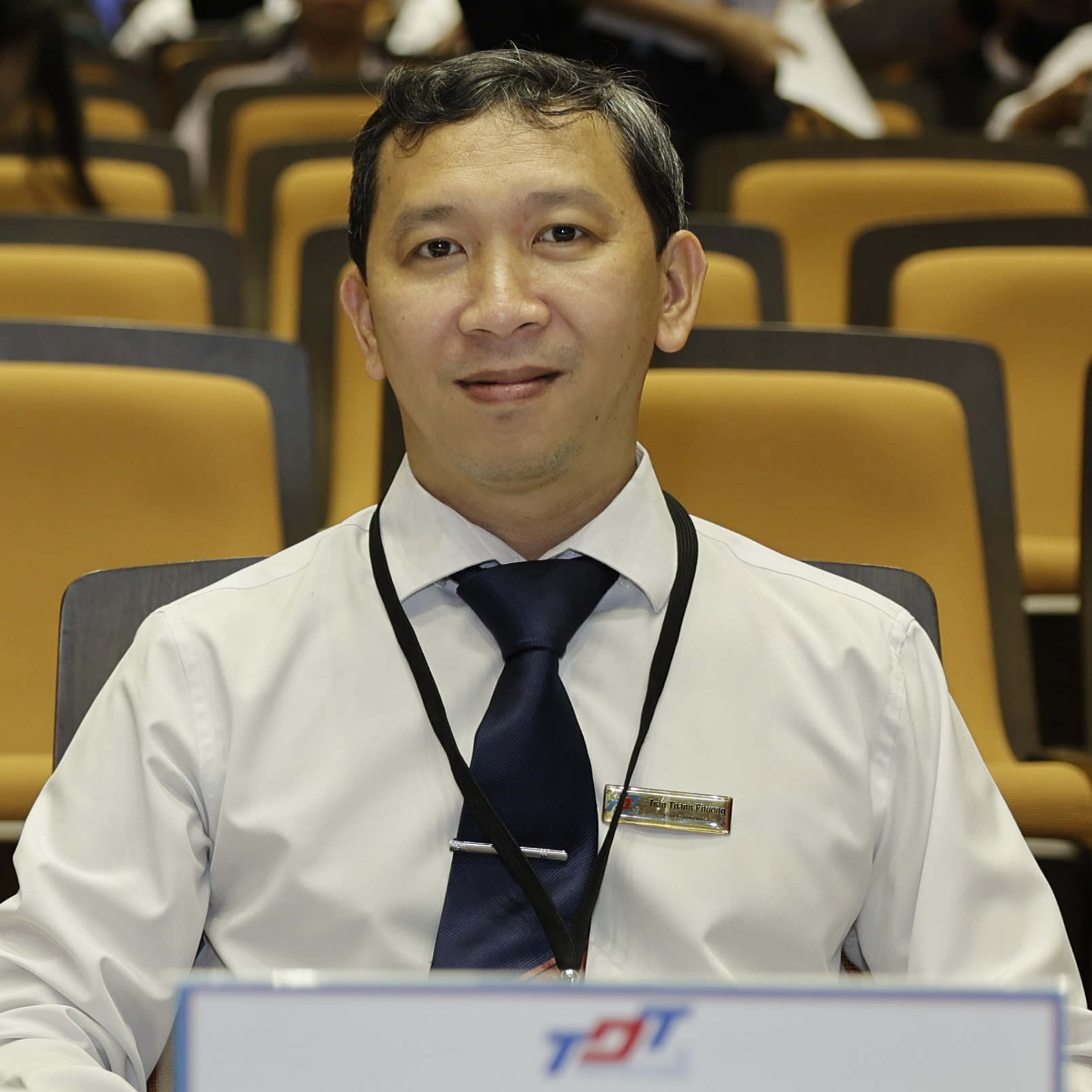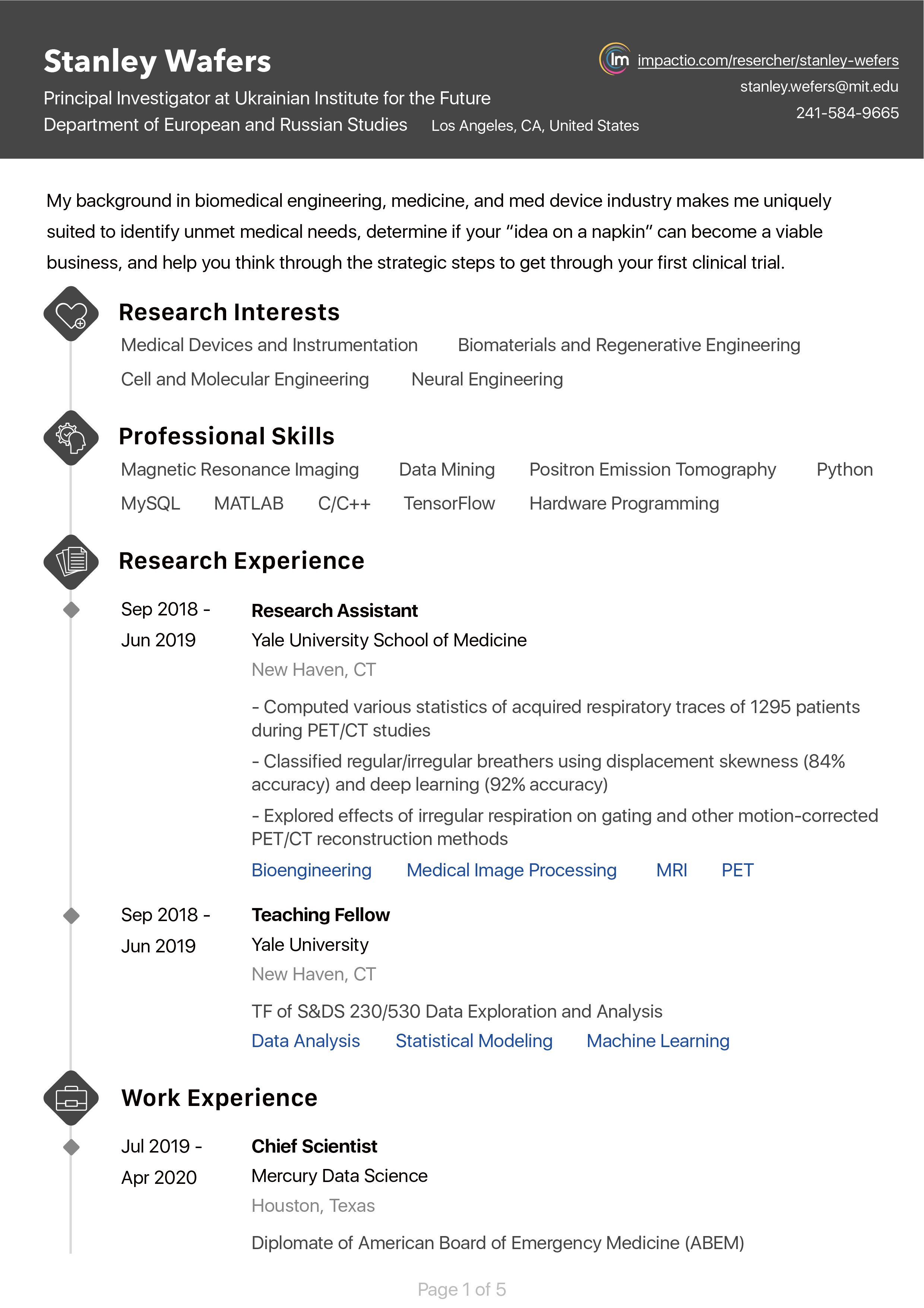I have been working partime in a system-on-a-chip design projects in the company to fulfill the requests from international chip design companies.
- Produce technical specification for the EC1 Framer inside the RED CHIP (an OC192/OC48/OC12/OC3/EC1 System-on-a-chip).
- Delivered the Verilog test bench code for testing the functions of RED CHIP.
- Maintained and improved the TV/monitor production line.
- Studied Six-Sigma theory for optimizing the manufacturing processes.
I got the Master Degree in Mathematics by course work from Purdue University in the field of Applied Mathematics.
I got the Vietnam Education Foundation (VEF) Fellowship for studying doctoral degree in US, starting from 2007. My PhD dissertation title: "Analysis and Optimization of Cooperative Wireless Networks".
I got the Master Degree in Engineering from Ho Chi Minh City University of Technology (a member of Vietnam National University at Ho Chi Minh City). My thesis title was "Investigating of solutions for capacity improving of MC-CDMA systems".
I got the Bachelor of Engineering Degree from Ho Chi Minh City University of Technology (a member of Vietnam National University at Ho Chi Minh City), with the specialization in electronics and telecommunications. My thesis title was "Noise reduction in satellite communication using Wavelet Transform combined with Neural Networks and implement the solution on TI DSP kit".
This work proposes a simulation framework that is systematic and well-updated, based on the collection of the unsystematic simulation codes that have been published or shared, in order to enhance the
quality of teaching the 5G and 6G concepts for both undergraduate and
graduate students. Besides developing the architecture of the simulation
tool as well as building up the friendly user interface for each module, this
work provides a comprehensive simulation tools that cover many group of
advanced technologies or solutions for 5G/6G networks, including modulation waveforms, non-orthogonal multiple access techniques, massive
MIMO systems, energy saving solutions (such as RF energy harvesting,
self-energy recycling, intelligent reflecting surface, etc.), cognitive radios,
physical layer security, and artificial intelligence in wireless communications. Different from the previous simulation tools for 5G networks, this
work can provide more diversity on the advanced technologies, and support the learning-by-doing approach in wireless communication training
In this work, we consider a multi-hop wireless relay neworks,
in which the source node and destination node have fixed location while
we can control the positions of the relay nodes. Some strategies to control
positions of relay nodes to minimize energy consumption of transmission from sources to sinks is introduced and analyzed. Three different
cases were investigated, including networks with single flow, networks
with multiple flows, and networks with coverage constraints for the relay
nodes. The most contribution of this paper is providing simple localized algorithms for relay nodes, yet optimize the energy consumption
problem. The analysis is also confirmed by numerical results.
Among the basic binary channels, the channel with insertion and/or deletion still haven’t been studied significantly. This is the channel where each input bit is transformed in one of the following ways: it is deleted with probability d, or an extra bit is added after it with probability i, or it is transmitted unmodified with probability 1 − d – i. The closed-form capacity of this channel is not even known up to now. Some previous works have tried to bound the capacity of this channel and find practical codes to achieve the optimum rate. This talk is to highlight some recent results in this area and introduce some open problems that are interesting to consider.
A joint optimization problem of power allocation and computational functions for the advanced cooperation scheme, Compute-and-Forward, is analyzed, and an iterative algorithm to solve this problem is also introduced.
We consider the wireless relay network in which a base station communicates with multiple subscribers, each of which has the ability to act as a relay to forward information to a base station. Here, we propose an algorithm for joint optimization of power allocation, time scheduling, and relay selection when there is imperfect channel state information (CSI). We show that the algorithm converges with probability one to the optimal
solution when a condition is satisfied. Otherwise, it converges with probability one to a solution in some neighborhood of the optimal solution.
In wireless communication networks, to enhance the quality of transmission, we use more than one antennas to achieve the transmit diversity. However, wireless devices such as mobile phones cannot have more than one antenna due to the limitation of size and complexity. Recently, cooperative communications has been proposed to create the so-called
virtual antenna systems for circumventing this problem. This technique achieves a diversity gain by using a combination of the relayed signal and the direct signal. In this project, we use a so-called dual optimization method for non-convex problems to jointly optimize the power allocation and the scheduling of wireless cooperative OFDM system. We will mathematically
analyze this problem to find the optimal solution, and confirm our analysis by numerical results.
In the Journal of Science and Applications, published by Ton Duc Thang University (ISSN:1859 -2244).
This is a certificate for a year of service (2022) as Exemplary Reviewer of the IEEE Communications Letters.
This project is funded by Ton Duc Thang University. I am working as the Principal Investigator of the project.
This project is funded by Ton Duc Thang University. I am working as a member of the project.
This project is funded by National Foundation for Science and Technology (NAFOSTED). I was a key member and also the scientific secretary of the project.
This project is funded by Ton Duc Thang University. I was working as the Principal Investigator of the project.
This project is funded by Ton Duc Thang University. I was working as one of two members of the project.
This project is funded by Vietnam National University at Ho Chi Minh City. I was working as a member of the project.
This course introduces the process of sampling, quantization, z-transform, Fourier transform and methods to design digital filters. This unit will cover the following:
Convolution: Using impulse function to represent discrete signals; description of convolution using linear superposition.
Fourier analysis: Fourier series for periodic signals, continuous Fourier transform, discrete Fourier analysis, fast Fourier transform.
The z-transform and digital filter design: definitions and properties of z-transform; the z transfer function.
Signal sampling: process of sampling, principles of analogue to digital and digital to analogue conversion, ADCs and DACs in system.
Design of FIR filters: the window method, phase linearity, the frequency sampling method, inverse filtering and signal reconstruction.
Design of IIR filters: the bilinear z-transform, digital Butterworth and Chebyshev IIR filters; pole-zero placement revisited; biquad algorithm design strategies; FIR expression of IIR responses.
This unit will introduce two subjects that are important in communications and control engineering: state space models, and probabilistic methods of signal and systems analysis. All concepts will be illustrated with examples and students can do coursework and exercises using tools such as MATLAB:
State-space models: linear state-space models from differential equations; relationship between state-space models and transfer functions; dynamic response of state space models; similarity transformations and choice of basis; well-conditioned and ill-conditioned realisations of control systems.
Probabilistic methods: the concept of probability; random variables, electrical noises, distribution functions, pdf correlation functions; spectral density; correlations, response of linear systems to random inputs.
Embedded system project will provide a problem analysis and system design experience. This project will be the first step for students to be familiar to the professional practice.
- The subject provides students with the skills to work, exchange knowledge with faculty. Students are then trained in the design and construction of circuits.
- Division of grouping, assignment Instructor guidance, topic identification, electronic or telecommunication orientation or two-way combination. Examples of these topics are as follows: Design of applied electronic circuits, programming of PLD / FPGA circuit design, computer network and data transmission, multimedia applications: image processing, audio, video, simulation, calculation, design of ultra-high frequency circuits, antenna design, etc.
-
Students take the task and protect their performance before the council.
Graduation project requires students to apply fundamental knowledge in the field of electronics and telecommunications engineering in combining with researching a specific topic in order to carry out the project successfully. Students will go through the process of receiving the project description, planning the project timeline, designing the methodology, managing the project and defending the project.
This course introduces the characteristics and operational principles of several active electronic components: diode, BJT, FET, provides a basis to analyze and design applied electronic circuits. This unit will cover the followings:
+ Ideal OPAMP: inverting, noninverting, difference amplify circuits, integrator and differentiator.
+ Characteristics and applications of diode.
+ BJT and FET: characteristics, biasing, small signal modeling and multistage amplifier.
This course introduces the mathematical tools for analyzing signals and systems in the time and frequency domains, and provides a basis for applying these techniques in control and communications engineering.
The following topics will be covered:
+ Systems, signals, mathematical models; Continuous-time and discrete-time signals; Energy and power signals; Linear Systems.
+ Linear Systems: Impulse response, input signals as continuum of impulses; Convolution: discrete-time and continuous-time.
+ Basis Functions; Fourier series representation of time functions; Fourier transform and its properties; Transformation of simple time functions.
+ Discrete-Time Systems: Sampling theorem.
+ Transfer Function of Continuous-Time Systems: Transfer function, frequency response, Bode diagram.
+ Transfer Function of Discrete-Time Systems: Impulse sampler, Laplace transform of impulse sequence.
This course provides students with two main topics: the capability to compress data to the lowest capacity and the theoretical limitation on data transmission rate through a communication channel. Specifically, this course introduces the statistical model of information; concepts and definitions of information measuring quantities such as self-information, mutual information, entropy, channel capacity; source encoding methods including optimal statistical coding (Fano, Shannon, and Huffman); channel coding methods for error detection and correction, including linear block codes, cyclic codes, and convolution codes.
Students will practice under the assignment and guidance of officers in the company. In addition to the assigned internship time, students have the task of taking advantage of the time ịn order to spend learning the experience of the company's staff, referring to specialized technical documents and writing reports. All students must be evaluated by the internship appraisal committee coordinated by the school and the business organization.
This course introduces basic knowledge in communication, providing the basis for students to analyze and design basic communication systems.
Details include the following:
- Sampling, eye charting, noise addition, noise coefficient ...
- Analog modulation techniques: AM, FM, PM, SSB, VSB
- Digital modulation techniques: ASK, BPSK, QAM, FSK
- Random signals
Mater's Thesis requires students to apply advanced knowledge in the field of telecommunications engineering in combining with researching a specific topic in order to carry out a research project successfully. Students will go through the process of receiving the research project description, planning the project timeline, designing the methodology, managing the project and defending the Master thesis.
This course provides the students with the understanding of fundamental engineering electronics and the ability of designing practical electronic circuits and analytical design methods.This unit will cover the following:
Frequency response of BJT and FET amplifiers.
Filters, such as low-pass (including 2nd order Butterworth low-pass), high-pass, band-pass, notch and all-pass filters.
Audio power amplifier circuits.
This course provides a basis in fundamental principals of detection and estimation, with applications to a broad range of problems in signal processing and, to a limited extent, communications and controls. The topics include detection and decision theory, Bayesian estimation methods such as MMSE and MAP as well as MLE; optimization theory of estimation including concepts of sufficiency, consistency and efficiency, Fisher's information, confidence intervals and basic hypothesis testing. Examples of applications are drawn from array processing, optimal filtering, inverse problems in image processing, and communication channel equalization and interference cancellation.
This course aims at introducing advanced topics in digital communications and providing students with up-to-date knowledge of the techniques used in modern communication systems and the principles underlying their design. The course covers three main areas: digital communication over bandlimited channels, modern channel coding techniques, and wireless communication techniques.
This course provides knowledge of modern radio systems. Details include the following:
- Attenuation and channel capacity.
- MIMO techniques, spread spectrum, multi-carrier modulation.
- Multi-access technology, multi-user detector.
- This course introduces the modern wireless communication systems. This unit will cover the following:
- Path loss and channel capacity.
- MIMO techniques, spread spectrum, multicarrier modulation.
- Multiple access, multiuser detection.
This course aims to provide fundamentals of switching and transmission in fixed telelphone network and VoIP so that the students can apply these techniques in the telecommunications. The contents can be divided as follows:
- Time switching and Space switching principles;
- Signaling network principle;
- PSTN network;
- VoIP network;
- SONET/SDH transmission network.
This course introduces:
- Introduction to advanced topics in digital signal processing (DSP);
- Research and propose new ideas to improve some existing DSP algorithms or implement effective algorithms on hardware;
- Evaluate and compare the proposed methods/algorithms with the existing one.
The course addresses principles, modelling, system solutions, and performance analysis for data communication in wireless networks. This course will cover the following topics:
- Fundamentals of wireless networking
- MAC layer design and scheduling
- Rate allocation and power control
- Routing in multi-hop wireless networks
- Scaling Laws for multi-hop networks
- PHY-MAC cross layer design
This course provides the overview of high speed electronic devices, FET’s operation, and equivalent circuit models. It also indicates definitions of gain, distortion and stability; as well as providing knowledge of amplifier, noise and how to depress noise. It instructs students how to design some kinds of amplifiers (max gain, constant gain, low noise).
The ways how to design basic RF circuits: LNA, mixer, PLL, radio frequency power amplifier and measure noise figure of a system. Survey the basic transceivers in telecommunications (satellite, mobile systems).
This course is the graduated level of Digital Signal Processing that will review the processes of discrete random processes and introduces the advanced theory, methods for discrete-time systems and design methods for digital filters. This unit will cover the following:
- Application of Discrete Fourier Transforms: Approximation of filter specifications.
- Design of Digital Filters: Advanced digital filter design techniques, Implementation issues for digital filters, sensitivity and quantization noise.
- Multirate Digital Signal Processing: Decimation and interpolation of discrete-time signals.
- Linear Prediction and Optimum Linear Filters: Parameter estimation for linear filter.
This course provides students with fundamental concept on CMOS technology, VLSI chip design process, VHDL programming languages, combinational circuits and sequential circuits design based on VHDL and test-bench design.
Provide technical reviewing of the textbooks for secondary and highschool training on AI robots.









